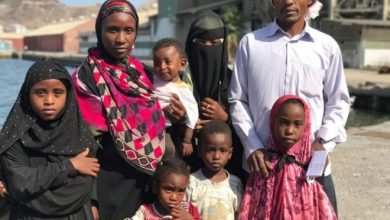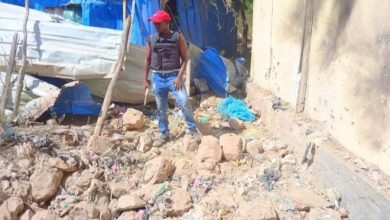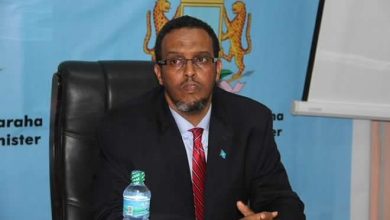Photos: Drought in Somalia worsened by funding gap, Ukraine war
Across the Horn of Africa, millions of people are facing severe hunger as a result of the worst drought in the region in 40 years.
As the situation deteriorates, aid agencies fear that a focus on the Ukraine crisis is likely to overwhelm the agenda and donors at a critical time for the East African country of Somalia in particular.
Currently, one in four Somali people faces hunger caused by extreme drought, and the United Nations (UN) projects that 4.6 million Somalis will not have enough food by May 2022.
In the southern regions of Somalia, people are flocking to camps for internally displaced persons (IDPs). The area is littered with dead goats, camels, sheep, cows and donkeys that have all died because of lack of water.
In the camps, the situation is dire. There is not enough food and only limited amounts of water are coming in, brought by water trucks. Many children are suffering from severe malnutrition.
“Five years ago, there was enough aid from the international community,” says Mohamud Ahmed of the Save the Children aid organisation in Somalia. “There was an adequate response. But this time, that alertness is not there. There is a gaping gap between the amount we need and the amount of donations raised so far.”
According to a statement by the UN Office for the Coordination of Humanitarian Affairs, only 3.2 percent ($47.1m) of the required funding ($1.5bn) for its humanitarian response plan has been received so far.
If the funding gap remains an issue, the UN’s World Food Programme will have to look at prioritising funds, said WFP spokesman Petroc Wilton, noting “It’s incredibly difficult because you have to choose which areas and populations need help the most.”
The organisation has already been forced to transfer money from its preventive programmes in Somalia to curative aid, he said.
“The situation is extremely dire,” Wilton continues. “We are already seeing the effects of the financing gap in the camps. We simply cannot help all the people who need help. It’s going to get worse unless we can somehow bridge that funding gap.”
After a devastating locust invasion, the negative economic effects of the COVID-19 pandemic and the ongoing drought, the war in Ukraine might be the latest blow to the already worrying situation in East Africa.
Last year, 53 percent of the food that WFP received in Somalia came from Ukraine. Now that the port of Odesa, Ukraine is closed for the export of food aid, WFP is predicting food scarcity and skyrocketing prices for staples such as wheat and peas in Somalia.





